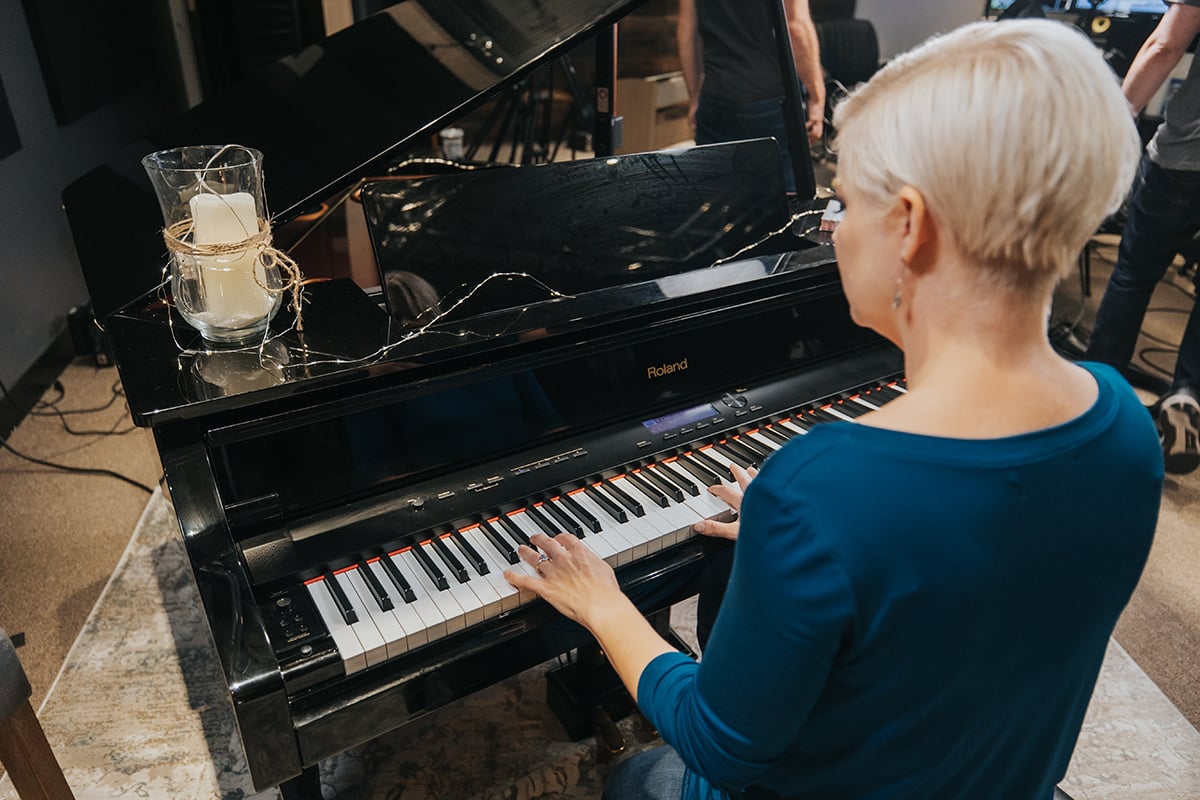As a progressing piano player, sometimes it will feel as though your hands aren’t on the same skill levels. You might find yourself asking, “Why is my left-hand coordination lacking??” 🤔🤔🤔
It’s quite simple, actually! When we’re playing songs, the right hand is in charge of the melody, leaving your left hand to plod along and play back-up. It just doesn’t get the same amount of attention when we’re playing.
But don’t worry! I’ve got some “handy” tips 😉 and a smart practice routine to “de-stupefy” your left-hand’s coordination.
In the exercise, we’ll work on improving:
It’s time to get both sides in harmony. 🎼🎶

For many people, our left hands are weaker. And while the right hand typically carries the melody on the piano, piano wouldn’t be the same without the left hand providing beautiful arpeggios and accompaniment patterns. Your left hand deserves more love, so check out the De-stupefy Your Left Hand course to give it the attention it needs! Free with your Pianote membership.
CHECK IT OUTYou don’t even need a piano for this one, and it’s smart to practice whenever you find a moment to breathe and a comfortable surface to tap on.
Gently rest your hand on a surface and take turns lifting and pressing each finger down from thumb (finger 1) to pinky (finger 5) and back.
You might notice it’s especially difficult to raise your ring finger (finger 4) independently from the rest. The 4 and 5 fingers are connected differently than fingers 1 to 3 and have less mobility. But this will ease up and become more natural with time and practice.
As you lift and press, not only are you building dexterity in each finger, but you’re strengthening them and improving the connection from your fingers to your brain.
🔥🎹 HOT TIP! If you find you are spending some time away from the keys, check out our lesson on practicing piano without a piano.What about ways to practice on the actual keyboard?
The octave scale is a smart routine that will target all of the areas you might struggle with. It might sound intimidating, but even if you have smaller hands you can do this!
We’ll be working with the C scale (just the white keys!) to keep things simple for beginners.
🔥🎹 HOT TIP! Watch how I target each note that I am about to play with my 5-finger. As you move your hand across the keyboard to span the octave, always be thinking about where you want to be playing next.As always, start slow and bring your speed up gradually. Even well-practiced players can find accuracy like this challenging. Focus is required to play consistently and comfortably.
Be very mindful to play with proper technique—you don’t want your fingers to tense up! Keep your wrist elevated and relaxed.
Now here’s where things start to get a little more complex…
We’ll play the notes of the ‘C scale’ in our right hand as we play the octaves in our left.
For this exercise, we always play the same note with our left hand as we do with our right.
Notice that my left hand is playing staccato, which means to come right off the keys before playing the next note. Meanwhile, my right hand is playing legato, which means to play smoothly from one note to the next. Getting your hands to play in these different styles simultaneously is an added challenge!
💁♀️ LISA SAYS: Imagine legato like playing with honey on the keys, your fingers sticking to the notes, each one flowing into the next.Too easy for you? Now it’s time to switch the roles of each hand…
Octaves with your right, single notes with your left!
It seems like a simple concept, but it might take a minute for your brain to adjust to this change. Start slow and steady!
🔥🎹 HOT TIP! Use a metronome to ensure you are working on your timing as well! The metronome is a great tool to measure your progress as you work your speed up, and there are interesting ways to incorporate it into your practice!When practicing this exercise, I highly recommend trying out different key signatures. Pick any of your favorite scales and apply this routine. This will better familiarize you with the full range of keys on the keyboard, and challenge you to think a little bit harder about what you’re playing.
If you are right-handed, this will be especially useful! Choosing to use your left hand over your right for run-of-the-mill tasks like opening the door or brushing your teeth will further reinforce the connections between your brain and body. And, perhaps, “de-stupefy” your hand a little bit!
All of this combined will help you to have much smarter left-hand coordination, and when you go to play songs you’ll perform with more confidence, you’ll be in much better control, and you’ll have more fun at the piano!
Lisa Witt has been teaching piano for more than 20 years and in that time has helped hundreds of students learn to play the songs they love. Lisa received classical piano training through the Royal Conservatory of Music, but she has since embraced popular music and playing by ear in order to accompany herself and others. Learn more about Lisa.
/marketing/pianote/promos/april/banner-bg-m.webp)
We use cookies for traffic data and advertising. Cookie Policy »
/marketing/pianote/promos/april/banner-title.webp)